Within the core of every successful venture lies customer feedback. Insights from the audience are the key to uncovering unmet needs and fresh perspectives.
But how can you truly understand what customers want? Join us to explore which types of feedback can enhance a brand’s social media reputation, what can be automated, and which methods don’t require a team of experts. As a bonus, at the end of the article, you’ll find a guide to boost conversions and increase customer loyalty.
Qualitative and Quantitative Feedback: How to Measure It?
What is Quantitative Feedback?
When it comes to collecting feedback, the question is whether to opt for quantitative or qualitative methods.
Quantitative feedback is collected through general and spot surveys. It offers a numerical perspective on customer feedback, enabling the quantification of satisfaction levels, preferences, and trends. For example, one notable metric is the Net Promoter Score (NPS). This indicator categorizes customers as promoters, passives, or detractors based on their likelihood to recommend the business.
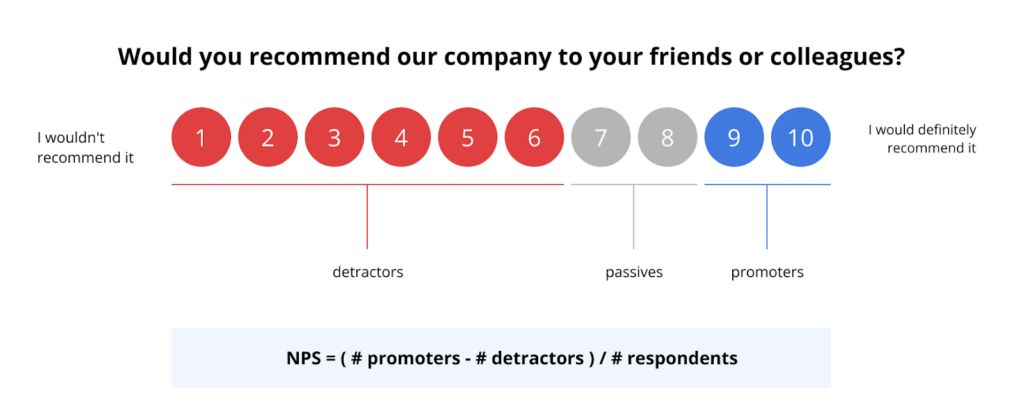
What is Qualitative Feedback?
Qualitative feedback, on the other hand, is gathered through methods like focus groups, in-depth interviews, or client shadowing. These approaches provide businesses with a lens to understand their customers at a deeper level. Evaluating qualitative insights involves expert analysis, and the results often reveal hidden pain points, motivations, and unmet needs. Qualitative feedback is particularly valuable for uncovering the “why” behind customer behavior and preferences.
Collecting qualitative feedback is essentially qualitative research. The main idea of qualitative research is to collect detailed responses from users, rather than rating a specific service or product on a scale. When examining qualitative research findings, it is important to focus on descriptions, explanations, and meanings. There is a framework known as FISH for this purpose.
FISH is a simplified approach to analyzing qualitative data with the goal of generating product ideas and forming hypotheses. The abbreviation comprises four phases of analysis:
- Fragments—divide the text into fragments.
- Ideas—record your ideas.
- Search—look for anomalies and be open to surprises.
- Hypothesis—formulate hypotheses and assumptions.
Now, let’s consider an example of a question and its corresponding feedback:
| Question | Feedback |
| How did you solve the problem of saving and investing money? | In November 2021, I realized that it wasn’t so easy to save money for building a house by simply keeping it in cash at home. I decided to open an investment account and deposit all the funds there. This way, I could also keep track of all my financial transactions in order to reduce my daily expenses. |
Next, let’s analyze the first part of feedback regarding the FISH framework:
| F | ISH |
| I: Create a calculator of financial successes and failures, to sum up the results of the year | |
| In November 2021, I realized | S: Why did you understand at the end of the year? |
| H: The end of the year is a time to reflect on financial results and change the financial strategy. | |
| I: Use the metaphor of a house to visualize portfolio growth. | |
| it wasn’t so easy to save money for building a house | S: Why does she need to have a house? |
| H: Savings typically have a specific end goal. Creating a comfortable living space is one of the fundamental human needs. | |
| I: Launch a “better than cash” advertising campaign. Show the security value of storing funds in investment products in communications. | |
| by simply keeping it in cash at home | S: Why is saving in cash a bad decision? |
| H: People hoard cash because they don’t trust investment products. |
and so on.
After analyzing the statements, you will generate numerous hypotheses, questions, and new ideas. Prioritize the most important ideas and hypotheses. Test your ideas further by using other frameworks. Hypotheses can be validated through surveys or A/B tests.
How to Collect Feedback?
From email surveys to website feedback forms, these methods serve as tools for understanding customer needs and will be useful in collecting both quantitative and qualitative feedback. By selecting the most appropriate of them, you can harness the power of customer feedback to drive improvements and enhance your products or services.
- Email surveys
Involve sending structured questionnaires directly to customers via email. This method is convenient for both businesses and customers, as it allows for easy distribution and collection of feedback.
Benefits:
- Cost-effective and efficient for reaching a wide audience.
- Can be automated and scheduled.
- Provides a comfortable environment for customers to respond.
Limitations:
- Requires a solid understanding of email marketing principles.
- Potential for survey fatigue if overused.
- May not capture the full spectrum of customer feedback.
Consider email surveys if you’re a well-established business aiming to gather comprehensive feedback and refine your offerings, as they excel in post-interaction scenarios. For instance, an e-commerce giant can use email surveys to collect insights on customer satisfaction after a purchase.
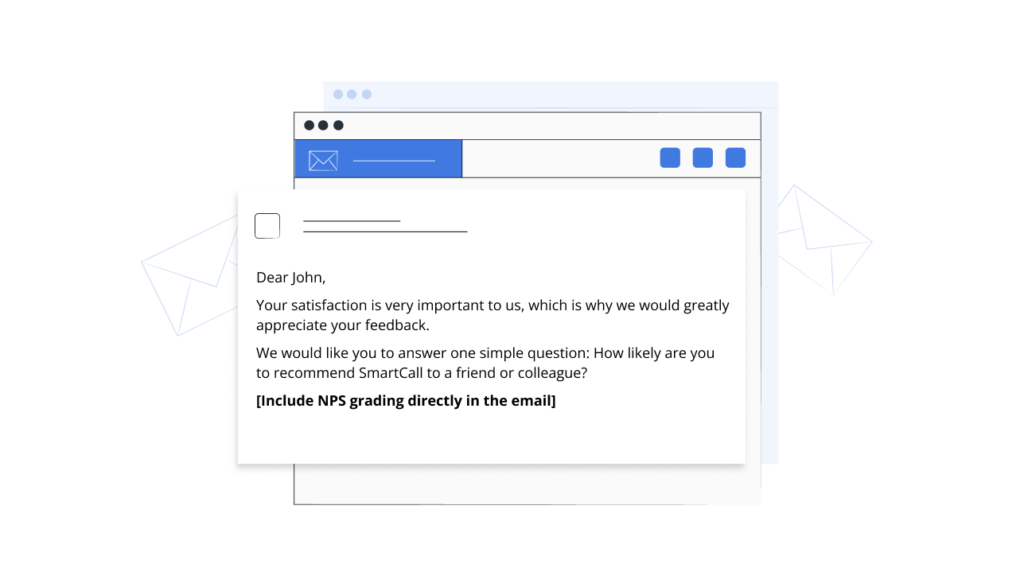
- In-App and website forms
Integrated directly into digital platforms, making it convenient for users to provide feedback without leaving the application or website.
Benefits:
- Captures feedback at the point of interaction, ensuring relevance.
- User-friendly and easily accessible.
- Real-time insights for immediate improvements.
Limitations:
- Requires IT expertise for implementation and maintenance.
- Users may find feedback requests distracting during their online experience.
- May not be suitable for non-tech-savvy customer segments.
Companies with a strong online presence can benefit significantly from In-App and website feedback forms. This is especially suitable for startups with technology products whose audience is tech-savvy. For example, a cryptocurrency platform can specify the hours for server maintenance to make it more convenient for users.
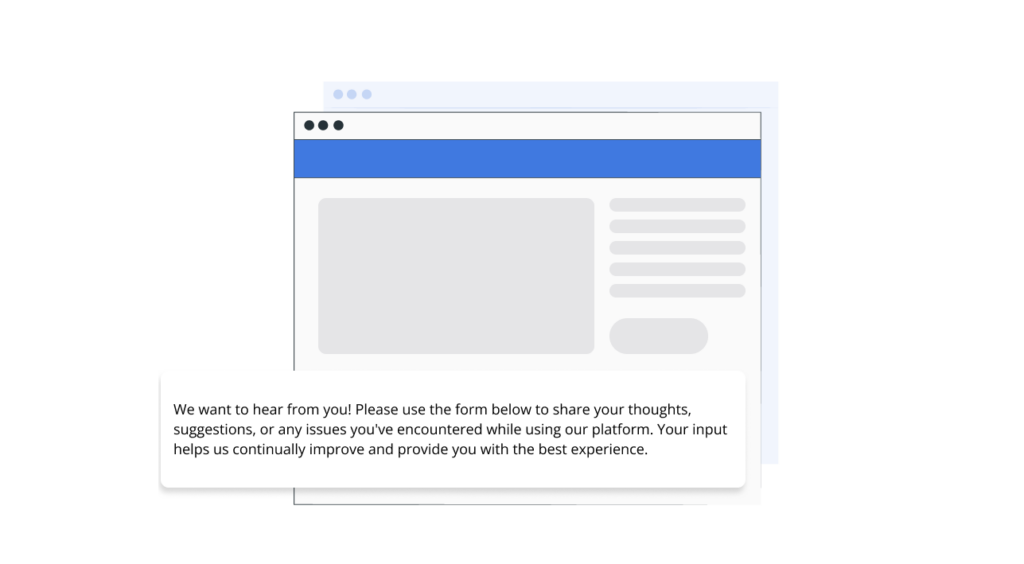
- Calls from an operator or a robot
Whether it’s a customer service representative seeking input or an automated survey call, this approach can be effective in collecting information.
Benefits:
- Allows for real-time interaction.
- Can gather feedback while customers are engaged.
- Provides immediate issue resolution.
Limitations:
- Customers may find automated calls intrusive.
- Response rates can vary, and some customers may hang up.
- Limited to specific timeframes for engagement.
This method is particularly useful for companies in industries like telecommunications or utility services, where direct communication with customers is routine.
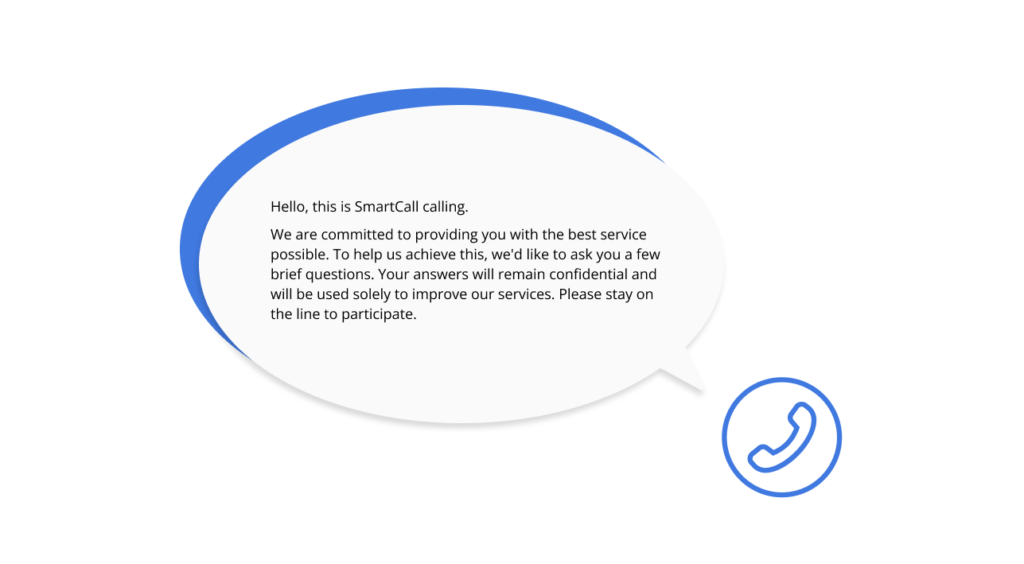
- Questionnaires
Questionnaires are a versatile tool for gathering feedback, as they can be administered through various channels, including online forms, printed surveys, or even mobile apps. They allow businesses to collect structured information from customers.
Benefits:
- Provides structured data for analysis.
- Can be distributed through multiple channels.
- Allows for customization based on specific objectives.
Limitations:
- May require a strong understanding of survey design.
- Response rates can decline if questionnaires are lengthy.
- Potential for survey fatigue.
Questionnaires are valuable in industries where structured data is essential for decision-making, such as healthcare organizations conducting patient satisfaction surveys, educational institutions seeking student feedback, and any other service organizations.
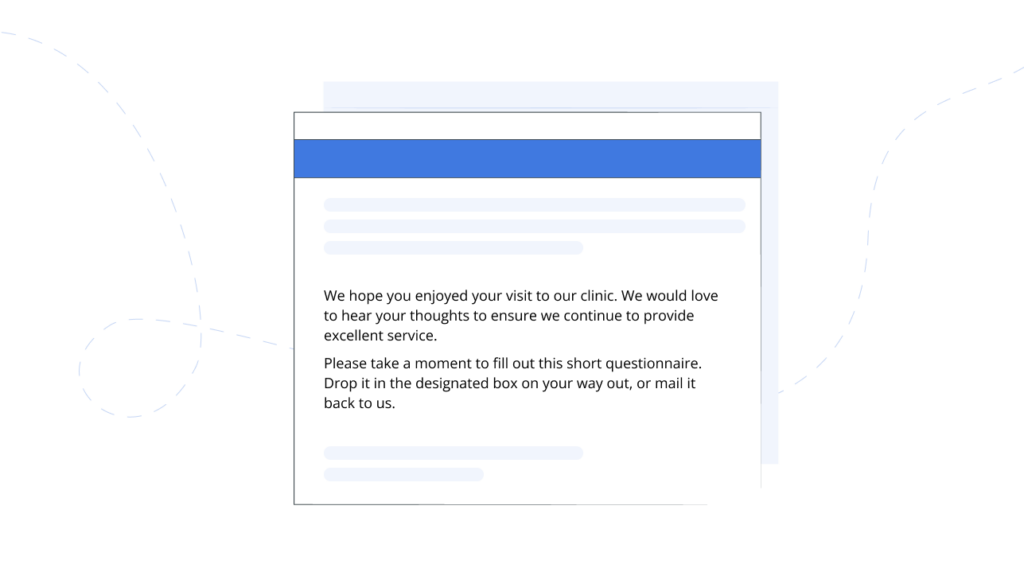
- SMS messaging
SMS marketing entails sending text messages to a specific audience to engage with customers, promote products or services, convey information, and achieve various marketing goals.
Benefits:
- High open and response rates, as most people check their texts promptly.
- Ideal for capturing quick, on-the-go feedback.
- Less intrusive than phone calls.
Limitations:
- Limited space for detailed responses.
- May not be suitable for lengthy or complex surveys.
- Need to obtain customer consent for sending text messages.
SMS messaging proves highly effective for businesses during promotional or sales periods. These can be restaurants, event organizers, or e-commerce companies with their own delivery seeking immediate feedback.
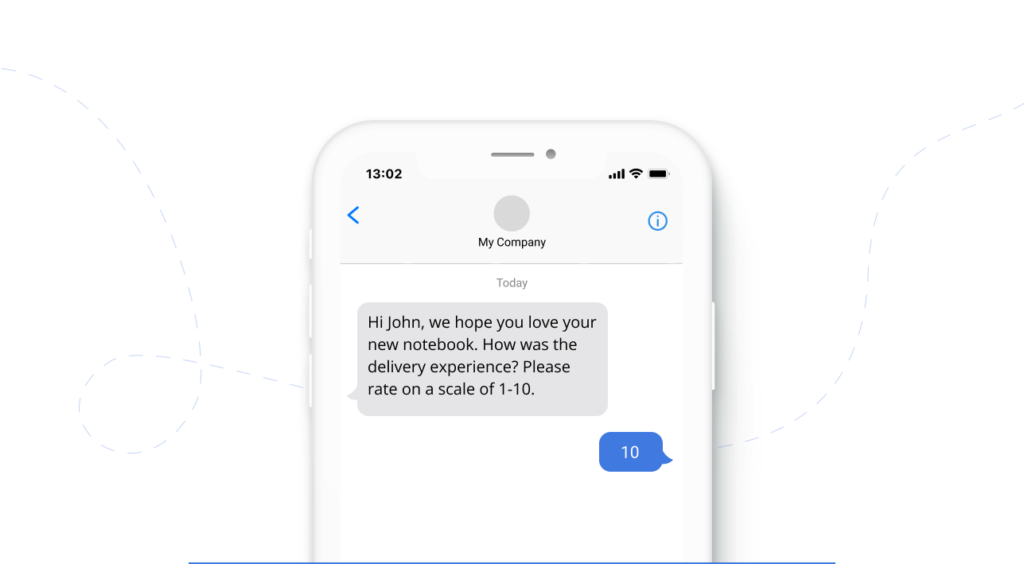
How to Increase the Number of Feedback?
When inviting customers to participate in surveys, several practical tips hold true, regardless of the chosen communication channel. A well-crafted invitation enhances the survey process and has the potential to significantly increase feedback participation.
- It’s essential to keep the invitation concise and clear by proofreading and editing the text to convey the message effectively.
- Personalizing the survey invitation can significantly enhance its impact: including details like the customer’s name, date, location, or employee’s name can make the message more engaging and relevant.
- Presenting the main message as a question, rather than a statement, tends to feel more natural and can boost response rates.
- It’s crucial to manage expectations by indicating if the survey won’t take much time or if the feedback will be acted upon.
- Teamwide testing is essential to verify functional links and compatibility across an array of platforms and email services, ensuring the survey process remains seamless.
Bonus: Guide “SMS Marketing for Business”
You might be contemplating which method is suitable for your business at this moment. Perhaps you’re already calculating the time and financial costs of hiring email marketers and IT specialists.
However, recent research has shown that businesses are increasingly turning to SMS messaging as an effective method for collecting feedback. In fact, a report by SimpleTexting revealed that 86% of businesses used SMS marketing to text their customers in the year 2022 – a 56% increase in SMS adoption from the previous year. This is due to the high response rates and immediate nature of messaging. On an average day, consumers check their text messages more than any other app on their phones, even more than social media.
Let’s stop your doubts. We already have a plan to get you started with SMS messaging for feedback collecting and more. Download Messagio’s guide to explore five mass SMS campaigns designed to collect feedback and drive sales.
Download Guide about SMS Marketing










